The Okame cherry tree is a celebration of early-season wonders. This hybrid cultivar, Prunus ‘Okame,’ unveils a breathtaking array of pink blossoms at the start of the year, providing nourishment for various pollinators. Beyond its spring showcase, the tree boasts deep green foliage which transforms into captivating hues of yellow, red, and orange in the autumn.
Uniquely, the Okame cherry tree thrives even in warmer zones, a feat many cherry trees can’t achieve. In places like northern Florida, its blossoms grace the landscape in January and February, while in more northern climes, its splendor is reserved for early spring.

This adaptable tree, with its tall and upright demeanor, grows at an impressive pace, potentially reaching heights of 15 to 30 feet within just 10 to 15 years. Whether shaped as a distinct tree or allowed to flourish as a broad shrub, it remains a versatile choice for gardeners.
Moreover, its adaptability extends to various soil conditions, showing resilience even in alkaline soils. Initially requiring regular watering, mature Okame cherry trees exhibit commendable drought resistance, benefiting further from a protective spring mulch layer.
A remarkable feature is its resistance to pests and diseases, ensuring its foliage stays vibrant throughout the seasons. With its captivating blooms and minimal maintenance, the Okame cherry tree is set to be the highlight of any garden, promising a display that neighbors will envy and nature enthusiasts will adore.
I. Plant Profile – An Overview of the plant
Celebrated events such as the Japanese Cherry Festival and the National Cherry Blossom Festival in Washington, D.C. underscore the allure of flowering cherries. However, these beauties often prefer cooler climates, making them a challenging choice for warmer regions of America.
Enter the Okame Cherry Tree, a unique variety that flourishes even in the balmy stretches of Florida. Yet, its adaptability isn’t confined to warmer zones; garden enthusiasts from north also cherish its visual splendor, especially when paired with varieties like the Yoshino Cherry and the Kwanzan Cherry.
Every spring, the Okame Cherry heralds the season with its cascading clusters of vibrant pink flowers, emerging even before many other cherry blossom trees. This early bloomer not only adds a pop of color but also extends the cherry blossom viewing season, especially when integrated with other varieties. Whether serving as a standalone specimen on your lawn, nestled among larger shrubs, lining your driveway, or gracing informal gardens, its versatility shines. Typically cultivated as a tree, the Okame Cherry can also be groomed as a sprawling bush by pruning the central branch during its early years.
Diving into its lineage, the Okame Cherry Tree’s botanical name is Prunus x incamp ‘Okame’. A fusion of Prunus incisa and Prunus campanulata—both native Japanese cherry species—this hybrid owes its existence to the renowned English flowering-cherry authority, Collingwood Ingram.
Although its name echoes Japanese origins, its creation in the mid-20th century is a testament to Ingram’s prowess as a plant breeder. Unlike many naturally occurring cherry species, the Okame is a meticulously crafted hybrid, blending the best ornamental features of its parent trees, which grants it not only its mesmerizing aesthetics but also a commendable resilience to temperature variations.
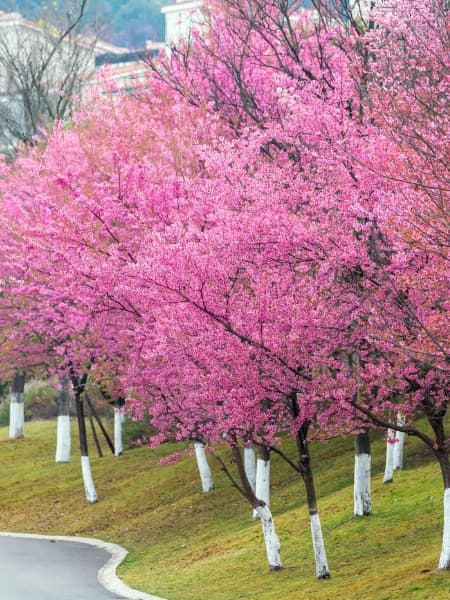
II. Appearance
The Okame Cherry Tree is distinguished by its swift growth, reaching heights between 15 to 30 feet and spanning a similar width. Its most defining feature is the profusion of vivid pink flowers, which, depending on the region, can make their appearance as early as January or later during spring.
These blooms attract attention not just for their vibrant hue but also for the dense manner in which they envelop the tree’s bare branches. This floriferous display can last for up to three weeks, soon giving way to the foliage.
The leaves generally remain vibrant and healthy throughout the summer, and in regions with cooler autumns, they adopt stunning shades of bronze, red, and orange before they shed. Complementing this colorful palette is the tree’s bark, which boasts a glossy, rich chestnut shade. While the tree does produce fruit, they are minor and often overlooked.
In terms of longevity, the Okame Cherry Tree’s lifespan can vary based on its environment and the care it receives. However, akin to many ornamental cherry trees, it tends to have a relatively brief life. Under optimal conditions and with diligent care, this tree typically thrives for three to five decades.
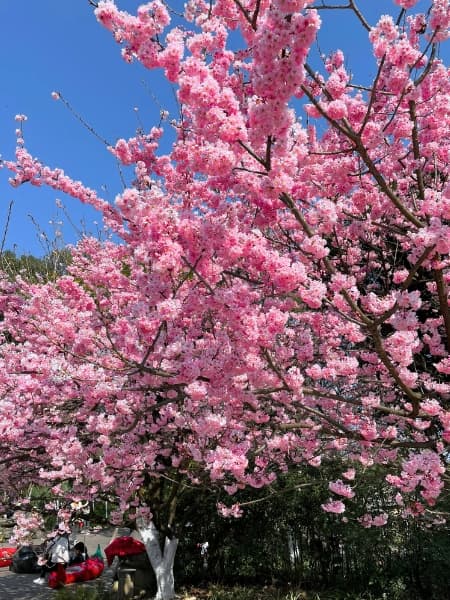
III. Growing and Care Conditions
Growing an Okame Cherry Tree can be a rewarding experience. Unlike many flowering trees that take their time to mature, the Okame boasts a rapid growth rate, with potential to grow over two feet annually. This tree is recognized for its reliable blooming, ensuring a vibrant display of carmine-pink blossoms year after year.
Planting
For the optimal growth of your Okame Cherry Tree, select a location with proper sunlight and has well-drained soil. Prepare a hole that is as deep as the tree’s root ball and about three times its diameter. While planting, mix in some organic material and phosphate-rich fertilizer.
Ensure the tree stands at the same depth as it did in its initial pot, preventing it from being planted too deeply. Fill the hole with water, let it drain, and then backfill the soil. Keep the tree well-watered throughout its first growth season, and maintain a protective layer of mulch around its base to conserve moisture and ward off competing grass.
Light
The Okame thrives best under ample sunlight, growing at a medium pace. Select a location that receives full to partial sunlight.
Watering
The Okame requires regular watering, especially during its initial stages. For young trees, it’s ideal to water them at least twice a week, ensuring that the soil stays adequately moist. As the tree matures, you can reduce this to about once a week, bearing in mind that the Okame is fairly drought-tolerant in its mature phase.
Fertilizer
During the first two years, the tree will primarily focus on establishing its roots. After this period, introduce a nitrogen-based fertilizer. It’s recommended to administer 1/10 pound of nitrogen for each year of the tree’s age, maxing out at 1 pound annually.
This can be applied in a single dose during spring or split across multiple applications throughout the spring and summer. A yearly touch of low-nitrogen fertilizer can further enhance the tree’s growth and blossoming.
Temperature
The adaptable Okame Cherry Tree thrives across various climates, ranging from zone 6 to 10. Despite its preference for cooler climes, it adapts well to warmer regions, requiring minimal chilling hours to bloom. An excellent fit for regions where temperatures of 32°F are rare, it thrives in full sun but can manage with partial shade.
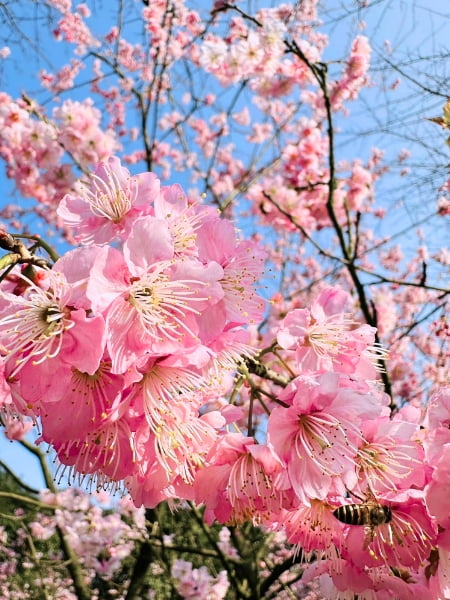
Pruning
To maintain the tree’s vitality and enhance its ornamental value, consider a post-bloom pruning regimen. This timing ensures you don’t inadvertently cut off the season’s blossoms. Focus on eliminating suckers near the trunk base and any diseased or dead branches to preserve the tree’s health and aesthetics.
Pests and Diseases
Though the Okame Cherry Tree is robust, it’s not invulnerable. Soil with poor drainage can lead to rot due to the tree’s water needs. Vigilance is required to guard against scale, aphids, blight, and mildew. Additionally, leaf scorch might occasionally manifest, evident through distinct foliage discoloration.
Pollination
The Okame Cherry Tree is not only a visual delight in early spring but also a valuable nectar source for various pollinators over its extended blooming period. Although it’s good for pollinators, its fruits are typically not the primary reason for cultivation, making pollination a secondary concern for most gardeners.
IV. Maintenance
Sunlight is vital for the Okame, especially in cooler regions. If situated in warmer zones, a bit of daily shade can help optimize its blooms. A proactive approach to care includes removing faded blooms during pruning, as this encourages a more abundant flower display in the subsequent season.
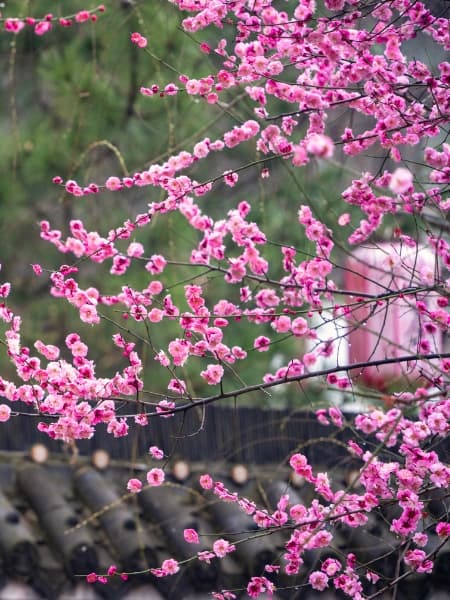
V. Uses
The Okame Cherry Tree is a versatile and captivating addition to any landscape. Its deep pink blooms, which cover nearly every branch in early spring, are a stunning sight to behold. The vibrant green foliage that follows offers respite from the increasing summer heat.
When planted in your front yard, it can serve as a centerpiece. Accompanied by boulders and soft touch holly shrubs, the setup becomes even more picturesque. Its beauty remains evident even when viewed from inside the house. To further enhance its charm, consider pairing the tree with blue junipers or yellow-gold shrubs like the Gold Mop Cypress or Kaleidoscope Abelia. These combinations accentuate the tree’s colors, making it an eye-catching focal point.
Given its compact size compared to other flowering trees, the Okame Cherry Tree is ideal for lining driveways or arranging in small clusters. As seasons change, its allure continues. In autumn, it mesmerizes with yellow, orange, and red leaves. The winter showcases its unique red-bronze bark, setting it apart from the silvery gray of many other cherry trees. The bark is adorned with lined lenticels, a cherry tree signature.
VI. Why should you buy this plant
The Okame Cherry Tree is more than just a tree; it’s a celebration of nature. Recognized as the centerpiece of the ‘Cherry Blossom Festival’ in Washington D.C., its blooms attract countless admirers from far and wide. Having such a spectacle in your backyard is indeed a privilege.
As spring arrives, the Okame bursts into a sea of fluffy carmine-pink flowers, announcing the warmer days ahead. Its beauty carries a deeper symbolism, echoing the early 1900s gesture when Japan gifted thousands of cherry trees to the US as a token of friendship. It’s no wonder then that the Okame Cherry is a favored gift tree, symbolizing lasting bonds and friendship.
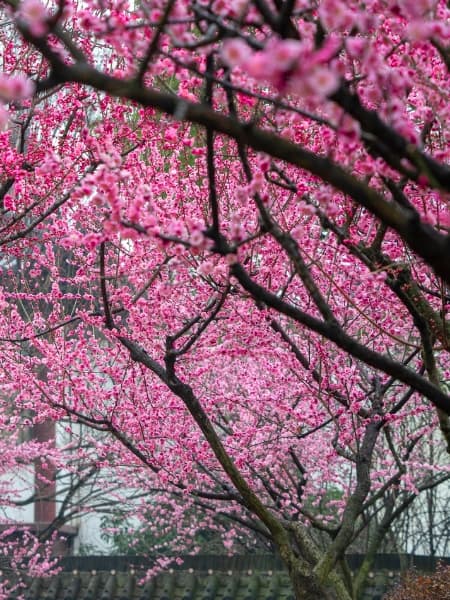
Beyond its visual appeal, the tree’s adaptability adds to its charm. Growing to a moderate height of 15-30 feet, it flourishes in both full and partial sun, accommodating various soil types and climates. Once rooted, it’s a low-maintenance gem that can fit even in smaller gardens, thanks to its upright, vase-shaped structure. In essence, the Okame Cherry Tree stands as a testament to nature’s beauty, a herald of spring, and a symbol of enduring bonds.
FAQs
What makes the Okame Cherry Tree unique compared to other cherry trees?
The Okame Cherry Tree is renowned for its early and profuse deep pink blooms that blanket almost every branch in spring. Additionally, its bark in winter showcases a distinct red-bronze color, unlike the common silvery gray seen in many other cherry trees.
How should I pair the Okame Cherry Tree in my landscape for the best visual effect?
Pairing the Okame Cherry Tree with blue junipers or yellow-gold shrubs, such as the Gold Mop Cypress or Kaleidoscope Abelia, can accentuate its colors. For a picturesque setup, consider planting it in your front yard with boulders and soft touch holly shrubs as complementary elements.
Is the Okame Cherry Tree suitable for warmer regions?
Yes, the Okame Cherry Tree is notably tolerant of heat, humidity, and drought, making it an excellent choice for warmer areas, including the deep south.
Why is the Okame Cherry Tree considered a symbol of friendship?
The Okame Cherry Tree’s prominence as the centerpiece of the ‘Cherry Blossom Festival’ in Washington D.C. traces back to the early 1900s. During that time, Japan gifted thousands of cherry trees to the US as a token of friendship. This gesture, celebrated annually, has made the tree a favored symbol of lasting bonds and camaraderie.
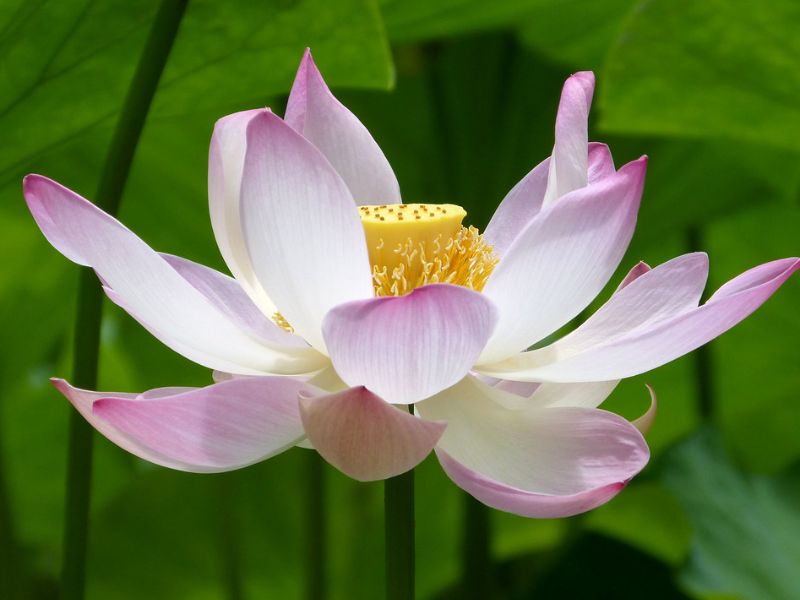
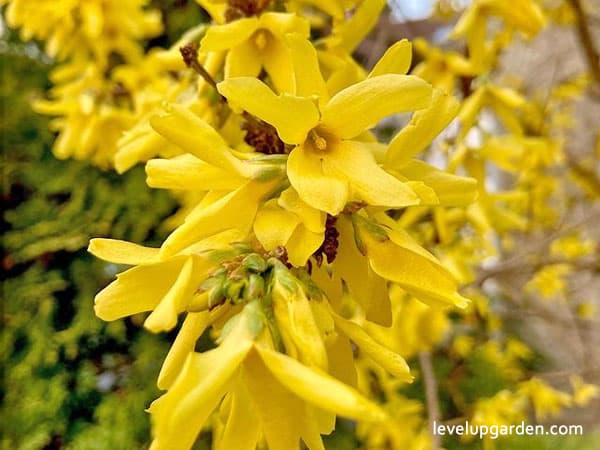






Leave a Reply